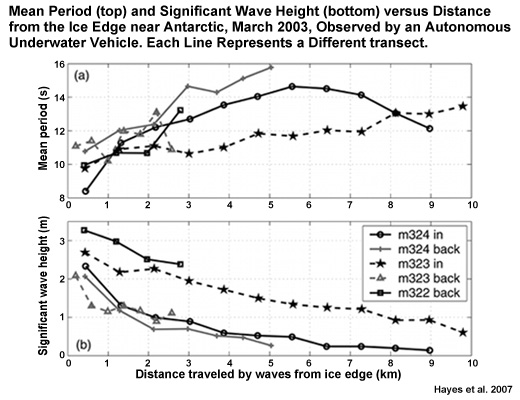WavesSea Ice
Mean Period (top) and Significant Wave Height (bottom) versus Distance from the Ice Edge near AntArctic, March 2003, Observed by an Autonomous Underwater Vehicle. Each Line Represents a Different transect. Credit: Hayes et al. 2007

Sea ice profoundly affects waves in the Arctic. First, waves don't form in sea ice, unless there is significant open water. Second, waves approaching the ice from open water decay quickly after entering the Marginal Ice Zone (MIZ, usually defined as an ice concentration greater than 15%). The rate of decay is exponential and depends on the frequency of the waves and the size and concentration of ice floes. Shorter period waves decay faster than longer period ones. As a rough guide, the height of waves with an 8-9 second period will halve every 1-4 km into the MIZ.